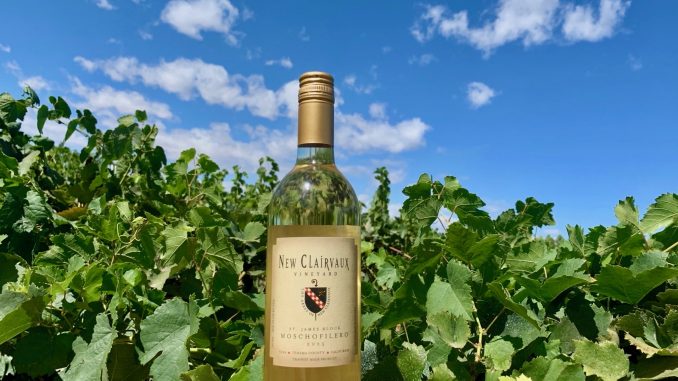
By Scott Thomas Anderson
Fall is a season for lingering on the past – for heightening our sense of the history all around us.
Twenty miles north of Chico, there is place where lasting legacies come alive, from the vines and crops growing on a famed tycoon’s lost ranch, to the wayward stones of a 12th century European church, to the rarest kind of Old-World wines now energized by a breath of California.
New Clairvaux Vineyard is one of the area’s genuinely intriguing destinations.
Nestled in the town of Vina, it bears fingerprints from some of the Gold State’s biggest personalities. It’s also populated by an order of Trappist Cistercian monks who embody nearly a millennium of religious devotion in their daily lives. It’s safe to say there is no other place on the West Coast where one can sip Albariño or Sirah within sight of a re-built Spanish abbey from the Renaissance, while at the same time waving at men of the cloth who are donning white cowls. But one of the biggest factors holding this out-of-time experience together is Aimée Sunseri, the fifth-generation winemaker whose artisan touch is getting more and more praise for how it honors roots that metaphorically run deep.
So why does this pleasant oddity of a drinking and sight-seeing exists?
The very abbreviated story is that in 1930 William Randolph Hearst, the nation’s greatest and most-controversial newspaper baron, bought a 12th century Cistercian church in Trillo, Spain, before having it disassembled and shipped to California. This was entirely in character with Hearst’s tastes and spending habits. Anyone who’s visited Hearst Castle in San Simeon knows that the inspiration for “Citizen Kane” purchased art, artifacts and holy relics from across Europe to furnish his lavish Xanadu. In the case of the Spanish chapel, the commandeered holy stones became overly burdensome, so Hearst eventually traded them to the city of San Francisco to square-away a debt.
Much later, in 1955, a Cistercian monk who’d recently come to San Francisco named Father Thomas X. Davis became aware of the de-constructed stones. Two decades on, Father Davis – now an Abbot – started talking to San Francisco’s de Young Museum about bringing the stones back into his order’s embrace. But at that time Bay Area leaders harbored dreams of rebuilding the church to add on to their own historical panache. That is – until they went through the devastating Loma Prieta earthquake in 1989.
Father Davis and his brethren ultimately got the stones.

The monks had plans to bring them to a tectonically safer place, which turned out to be the hamlet of Vina. There, the Cistercians bought the remnants of a 600-acre ranch once owned by another giant of California history, Leland Stanford. The “Big Four” railroad founder was known for many things, including owning industrial gold mines, building Victorian mansions, manipulating state politics and the governorship, and starting one of the most prestigious universities in the nation. What few know about Stanford is that for years he operated a marquee winery of the West on his land in Vina. Traditionally, Trappist Cistercians couple their meditative prayers with manual labor. After learning the property’s background, the monks began to think about planting and working vineyards on it. They soon teamed up with Phil Sunseri to make that happened. Sunseri was a well-known builder of affordable housing in Chico, but he was also the great-grandson of Anton Nichelini, one of Napa’s earliest pioneers for winemaking.
Sunseri happened to own a Vina ranch right by the monks.
Today’s New Clairvaux is a joint venture between the Sunseri family and the order at the abbey. After attending the viticulture program at UC Davis, Phil’s daughter, Aimée, became the head winemaker. The monks are involved in farming grapes, tending the vineyards and working the harvests. Aimée gets her vino magic going from those yields. In 2017, she was named International Woman Winemaker of the Year by the IWWC. This year, the vintages coming from Aimée and the order grabbed three of the top six highest awards from the California State Fair.
In addition to pouring regional staples like Viognier, Sauvignon Blanc and Tempranillo, New Clairvaux is also making two Greek varietals of wine almost impossible to discover growing and being fermented in California: Those are Moschofilero and Assyrtiko. The winery’s Moschofilero is particularly interesting. Sipping it brings on a sheen of graceful grapefruit inflections that are mellowed by hints of cream soda in the body, with its overall crispness feeling lively enough to almost be carbonated. A glass of this Moschofilero is perfect for complimenting a pear and arugula salad with goat cheese.
Less adventurous tasters – those who aren’t enamored by grapes from the island of Santorini or the Peloponnese peninsula, like this author – can rest assured that New Clairvaux is also pouring something magnificent and familiar in the form of its 2022 Aimée Primitivo: It hits the tongue with a warm raspberry radiance infused with touches of nutmeg and phantom hint of cinnamon. Beautifully smooth, this Primitivo pairs nicely with Moroccan-style braised lamb shanks.
With another autumn of memories beginning to stir, consider making the trip to New Clairvaux Vineyard. The tasting room’s friendly staff is happy to dig even deeper into its history, unpacking the past as they’re opening bottles and inviting you to wander the grounds where tales of ambition, ingenuity and abiding convictions all mingle in the breeze in way that’s … well … sacred.
Scott Thomas Anderson is also the writer and producer of the documentary podcast series, ‘Drinker with Writing Problems,’ Episode 6 of which is about the frontier days of Northern California.

New Clairvaux Vineyard on the monks’ property in Vina. Photograph by Scott Thomas Anderson

Be the first to comment